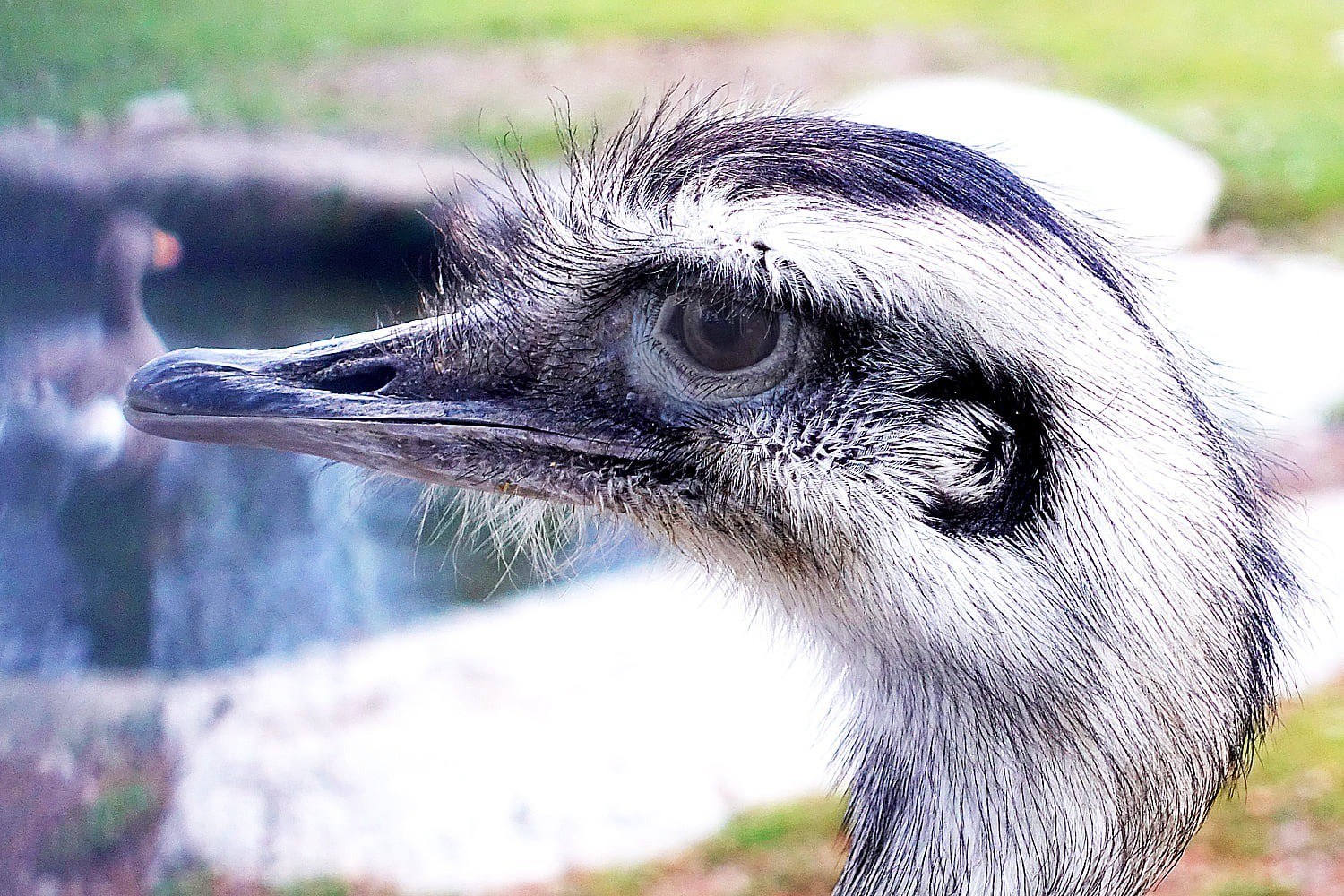A specimen of the Peruvian grasshopper Lophacris cristata mounted in a vitrine. Photo taken in my living room in December of 2020.
Movies of the Mind
by Brooks Riley
 The first time I ever left home without leaving home I was twelve years old, recently back from a winter trip to Mexico. Routinely sent to bed at 8 pm (my parents were old and old-fashioned), always wondering how to fill the inevitable two hours of insomnia, I opted to return to Mexico, not as the sleepless chiquita that I was, but as the fierce guerilla chief I would become in the narrative, leading a band of outlaw Aztecs in raids against a host of injustices from base camp in a desert. No precedents existed for my leadership skills in real life, but within the carefully sculpted storyline of the daydream, I was both charismatic and respected, not merely proficient but also inspired, a warrior queen to rival any Amazon.
The first time I ever left home without leaving home I was twelve years old, recently back from a winter trip to Mexico. Routinely sent to bed at 8 pm (my parents were old and old-fashioned), always wondering how to fill the inevitable two hours of insomnia, I opted to return to Mexico, not as the sleepless chiquita that I was, but as the fierce guerilla chief I would become in the narrative, leading a band of outlaw Aztecs in raids against a host of injustices from base camp in a desert. No precedents existed for my leadership skills in real life, but within the carefully sculpted storyline of the daydream, I was both charismatic and respected, not merely proficient but also inspired, a warrior queen to rival any Amazon.
Where did this come from, this semi-androgenous role so foreign to my timid female self? I may have been feeling powerless back then, on the verge of puberty and alone in my ignorance. My daydream could just as easily have come from a twelve-year-old boy but more likely it incubated in the tomboy I sometimes was. Gender had little to do with it, though. Empowerment is what mattered, something I desperately needed, as well as a jolly exciting way to pass the time until I fell asleep.
Daydreams have served the needs of human beings since the evolution of the imagination a few million years ago. The caveman who dreamed of bagging a boar pictured an encounter in his mind and practiced his moves. Except for those with aphantasia, we can all visualize places we’ve been and people we’ve seen. This ‘inner eye’ allows us to do much more than that—to create people and places that we’ve never seen, that don’t exist, and to give them life, context, and raisons d’être. This is how fiction is born, before the first word has even hit the page.
We all indulge in daydreams, those reticules in the mind that hold our most vivid hopes in the form of mise-en-scène, endowing our bucket list with emotional nuance and narrative—however improbable the reality. With age, however, imagining a dazzling future no longer seems viable, as the scope of our hopes and desires shrink, like the law of diminishing returns. Daydreaming is eventually reduced to hardly more than an imagined walk in the park when you’re stuck at home. Much of my bucket list has been accomplished, in sometimes surprising ways. My life has been eclectic, peripatetic, unexpected, and gratifying. I’ve been places, done things. What more could there be to dream about? Read more »
Early Years in Arizona
by Hari Balasubramanian
This year marks two decades since I moved from India to the United States. I look back at how it all began in Arizona.
 In the summer of 2000, after completing my bachelor’s degree in engineering, I had to decide where to go next. I could either take up a job offer at a motorcycle manufacturing plant in south India, or I could, like many of my college friends, head to a university in the United States. Most of my friends had assistantships and tuition waivers. I had been admitted to a couple of state universities but did not have any financial support. Out a feeling that if I stayed back in India, I’d be ‘left behind’ – whatever that meant: it was only a trick of the mind, left unexamined – I took a risk, and decided to try graduate school at Arizona State University. I hoped that funding would work out somehow.
In the summer of 2000, after completing my bachelor’s degree in engineering, I had to decide where to go next. I could either take up a job offer at a motorcycle manufacturing plant in south India, or I could, like many of my college friends, head to a university in the United States. Most of my friends had assistantships and tuition waivers. I had been admitted to a couple of state universities but did not have any financial support. Out a feeling that if I stayed back in India, I’d be ‘left behind’ – whatever that meant: it was only a trick of the mind, left unexamined – I took a risk, and decided to try graduate school at Arizona State University. I hoped that funding would work out somehow.
So in August 2000, I found myself traveling across continents to this powerful country that I knew little about. It was my first ever time outside India and my first ever flight. From Chennai, I flew to Kuala Lumpur, then, after an eight-hour layover which I didn’t mind at all, to Los Angeles and finally, after the worry of a missed connection, to Phoenix, Arizona. The gleaming, modern airports, the meals and the movies, the turbulence and the clouds: it was all very exciting, a glimpse of an elite world that had once seemed inaccessible.
At the Phoenix airport, someone from the Indian Students Association at ASU came to pick me up. After what seemed like a recklessly fast drive – in fact it was normal: it’s just that I’d never experienced a 70-miles-an-hour ride on a highway before – he dropped me off at an apartment shared by three Indian grad students. One of them, my host until I found an apartment, wore a veshti, the wraparound skirt common in south India. He spoke Tamil fluently; he spoke it so well that I could well have been in my home state. I had a nagging suspicion at the time that people might change as soon as they landed in a foreign country – that they might change their attire, even forget their mother tongue. It was reassuring to know that wasn’t true. At the heart of such doubts, I see now, was a fear that I would quickly surrender my Indianness. Read more »
Monday, December 21, 2020
To Build a Terminator
by Ali Minai
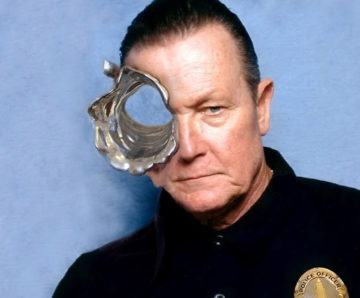 One of the most interesting and memorable characters in sci-fi films is the T-1000, the shape-shifting, nearly indestructible robot from the classic film Terminator 2: Judgment Day, starring Arnold Schwarzenegger. There are other, less prominent examples of shape-shifting intelligent beings in sci-fi – for example Odo, the chief of security on Star Trek’s Deep Space Nine, or the electromagnetic, gaseous, and otherwise inchoate life-forms encountered in various Star Trek episodes. These fictional examples raise the interesting question of whether intelligent beings without a fixed structure are feasible in practice – naturally or through technology (In fact – speaking of Star Trek – the question could potentially be extended to teleportation as well since that would presumably involve the re-assembly of a disassembled body, but that is too remote a possibility to consider for now.)
One of the most interesting and memorable characters in sci-fi films is the T-1000, the shape-shifting, nearly indestructible robot from the classic film Terminator 2: Judgment Day, starring Arnold Schwarzenegger. There are other, less prominent examples of shape-shifting intelligent beings in sci-fi – for example Odo, the chief of security on Star Trek’s Deep Space Nine, or the electromagnetic, gaseous, and otherwise inchoate life-forms encountered in various Star Trek episodes. These fictional examples raise the interesting question of whether intelligent beings without a fixed structure are feasible in practice – naturally or through technology (In fact – speaking of Star Trek – the question could potentially be extended to teleportation as well since that would presumably involve the re-assembly of a disassembled body, but that is too remote a possibility to consider for now.)
Recently, several research groups have worked on building robots that can reconfigure themselves autonomously into different shapes and perform different types of actions suitable to their current form. For example, a robot consisting of a large group of small, identical modules could turn itself into a compact sphere to roll down smooth surfaces, flatten itself to slide under doors, grow limbs to climb stairs, or take a snake-like form to crawl away. Such robots, with various degrees of reconfigurability, have now been implemented extensively, both in simulation and in actuality. Some of these robots are, in fact, controlled by external computers to which they are connected or by a centralized brain built into the robot, but the more interesting ones are based on distributed autonomous control: Each module in the robot communicates with other modules near it and, based on the information obtained, triggers one of several simple programs it is pre-loaded with. These programs might cause the module to send out a particular signal to its neighbor or make a simple move such as a rotation, alignment, detachment, or attachment. As all these mechanically connected modules signal and move in response to their triggered programs, the robot assumes different shapes and global behaviors such as locomotion or climbing emerge through self-organized coordination.
The primary feature in these robots is what might be termed radical reconfigurability, i.e., no elementary component has a fixed location in the body or is specialized to a task; like Lego pieces, it can serve any role anywhere. However, this property depends on another, more general attribute: radical distributedness. A radically distributed system consists of identical and exchangeable modules with no permanent functional specialization: Any module can take on any role as needed. Read more »
Animal Rights and Other Fictions
by Mike O’Brien

There’s a concept in education, particularly science education, called “lies-to-children”. It roughly means this: some matters are so complicated that they cannot be clearly understood when accurately presented. So, if you want a naive audience (“children”) to eventually understand how these complex matters actually work, you need to prepare their minds with inaccurate but helpfully simplified analogies, which are discarded and replaced by ever more complicated and accurate analogies, until they are finally ready to understand the most complicated and accurate version of the truth presently available. A concrete example is teaching Newtonian physics in high school, then telling university physics students arriving for their first day of class that everything they’ve been taught is a lie (and everything they’re about to learn is also a lie, but necessarily so).
The concept of rights, both human and non-human, is like this. It is different from concepts in physics or chemistry in that it is fundamentally prescriptive rather than descriptive, but operates exactly like “lies” in scientific education in that the simplicity and certainty of false portrayals serve to accomplish a useful end. In the case of science education, that end is a mental “formatting” that prepares the student for incrementally more complicated pictures of reality. In the case of moral advocacy, the end is to introduce a predicate that can be attached to objects in moral calculation, allowing moral discussions to proceed in a descriptive, concrete mode rather than a prescriptive, contentious one.
Do rights exist? That strikes me as a nonsensical question. Is there a moral state of affairs that is usefully analogised by “rights” discourse? Now you’re talking. I’m not sure that there is, or that any objective state of moral affairs can be objectively shown to obtain, but at least rights talk seems to be an activity that morally interested, language-using beings can engage in with useful results. We can talk about how people have rights, and what obligations those rights impose on how people are treated by others. We can talk about how animals have rights, and what obligations those rights impose on how animals are treated. We can even talk about according rights to trees, mountains, and legally incorporated businesses, if we want to. But the trees don’t know they have rights, nor do the mountains, nor do the animals. And, given the dismal state of moral and civic education in many places, nor do many people. If they don’t think of themselves as having rights (or, furthermore, lack any clear concept of legal or moral right), and don’t experience any special treatment or status as rights-holders, what does it matter if some philosopher or judge believes them to have rights? Read more »
Monday Poem

Prayer
I thank Thee for this couch
and the room it inhabits
and the chair which, being its partner
in undeserved comfort, leaves itself available
to any weary stander who might take advantage
of its open invitation to sit,
and for those two aptly-named bolsters
plumped at one of the couch’s ends
near the bookcase of stacked knowledge,
as incorrect as some of it might be
as spot-on as some of it might be
as brimming with the juice of knowing
or not, as the case may be,
those bolsters which in moments of fatigue
are there to do what their name suggests
in both guises, noun and verb,
to support that which seems to
uphold this scene in some place,
in some thing, a cathedral of a skull,
and thank you for the dark and tiny landscape
between the bookcase and the chair
which appeared out of nowhere as I drew,
in what had been a small white void
needing something there that
did not before exist,
amen
Jim Culleny
12/13/20
Pressure Points
by Joan Harvey

In my first column for 3 Quarks Daily I wrote that we are still fighting both the Civil War and WWII. As Henry Louis Gates Jr. puts it: “two hideous demons slumber under the floorboards of Western culture: anti-Semitism and anti-Black racism.” We have learned that any steps forward will be met with enormous resistance and backwards pressure. Gates quotes Ernst Cassirer: “every developmental step [of modern societies] can be reversed.” We saw this clearly post-Reconstruction, when everything possible was done to limit the lives of Black[i] people, and again following the two terms of the first Black president, when Americans chose an openly racist birther backed by the Ku Klux Klan and Neo-Nazis. A leap backwards was true as well for European Jews, who before the Second World War believed they had successfully assimilated into secular society.
Any reader of history cannot escape the echoes, back and forth, of racism, white nationalism, German and American ideas of purity. For example, jazz was reviled by the Nazis, and listening to it was a crime. Americans loved jazz, but as late as the 1950s Lena Horne couldn’t go into the dining room in the Sahara Hotel in Las Vegas. Black musicians had to reach and leave the stage through a separate enclosed corridor. Artie Shaw, who by all accounts was not at all racist and performed early on with Billie Holiday when most musical groups were segregated, at the same time hid the fact that he was Jewish. Ava Gardner reports that he sat silent at a table of bigwigs making antisemitic[ii] comments and even joined in rather than speak up and give himself away[iii].
Pressure Point, a film made in 1962 and directed by Hubert Cornfield, is a mostly unknown but quite brilliant dissection of both race and Nazism in America. Sidney Poitier portrays a psychiatrist who (in a flashback) has been given a job in 1942 in a federal penitentiary. He has purposely been assigned a patient who is openly a white supremacist, played vividly by Bobby Darin. (Neither character is named in the film so I will refer to the roles by the names of the actors.) Read more »
Neither selfish, nor stupid: natural selection doesn’t determine human nature; we do
by N. Gabriel Martin
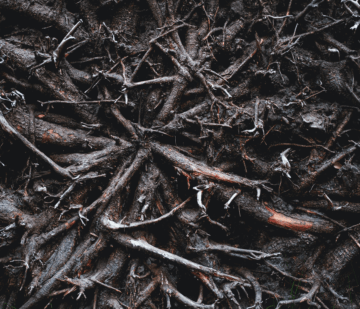
In 2017, the Nobel prize in economics attracted more attention than it usually does, when it was awarded to Richard Thaler. Articles in leading newspapers everywhere explained Thaler’s revolutionary insight: whereas economic orthodoxy was premised on the belief that humans are essentially selfish, Thaler’s work assumed that we are also stupid.
Thaler was the perfect laureate for a world trying to come to grips with Brexit and the election of Trump, even if the novelty of his theories was exaggerated. For many, faith in the decision-making ability of the public was shaken, and so was the conception of human nature underpinning liberal economics and democracy—that humans act in their own self-interest. How else could the decisions of tens of millions of Brits to tank their economy, or of more than a hundred million Americans to elect an unqualified, corrupt bigot be explained than by calling into question our ability to figure out what’s in our own best interests?
Thaler, though not all that original in this regard, has espoused a theory of human behaviour that maintains the assumption that self-interest drives our actions, but rejected the idea that we know what our interests are. This reimagining of human nature called for a reimagining of political possibilities. Thaler’s behaviourist economic view doesn’t support free market liberalism without conditions. A free market can, supposedly, be counted on to yield optimal results on the assumption that its members are able to choose what’s in their own interests, but if we are too stupid either to know what’s really in our own interests or to make the better choice most of the time, then there’s no reason to expect a free market to produce optimal outcomes. Read more »
Perceptions
The Gargoyle-logic of Creation: What can the pebbles of “Connemara Sculpture” (1971) say to us in 2020?
by Liam Heneghan
In Memoriam Tim Robinson (1935 – 2020) and Máiréad Robinson (1934 – 2020)

In Connemara: Listening to the Wind (2006), the first volume of cartographer and writer Tim Robinson’s trilogy of books about that rugged part of Co. Galway, Robinson records an illuminating and slightly fraught exchange that he had with landscape artist Richard Long about the fate of the artist’s work left exposed to the battering Irish coastal elements.
Work of Long’s include pieces sculpted from rocks and other materials found as he traversed natural landscapes on foot. The sculptures are gradually re-arranged by forces in the landscape, though the images have greater durability and are often displayed in galleries and preserved in archives.
In his excursus about Connemara to complete his trilogy, Robinson located one of Long’s sculpture on a small headland near the town of Roundstone The piece, entitled Connemara Sculpture (1971), is comprised of beach pebbles arranged in a distinctive pattern. This was not the first of Long’s pieces that Robinson had located and mapped. As a gift for Long, Robinson’s wife Máiréad had sent Long a copy of a map on which Robinson had marked a couple of pieces on Inishmore, the largest of the Aran Islands.
Long took umbrage to the gift, writing to Robinson that he was “very surprised and aghast when someone told me years ago that my work was marked on a map.” It had not been his intention, he went on to write, for the sculptures “to be marked sites.” Long concludes his letter to Robinson noting that fortunately the “map that you kindly sent… didn’t have my sculpture on it.”
Robinson—that consummate map-maker—replied to Long, pointing out explicitly where these sculptures were marked on the map. Of course they were mapped!
Along with Robinson’s spirited defense of the fidelity of his mapmaking, he makes the following point: “…once the artist has made an intervention in the landscape and left it there, it contributes to other peoples experience of place, which may well be expressed in someone’s else work of art.” He goes on to write, “…your marks on the landscape will have a career of their own; they are no longer defined by their origin in your creativity.” Read more »
Voices Of Tyrants In A Tyranny of Voices
by Thomas O’Dwyer
 On 9 October 1990, President George H.W. Bush held a news conference about Iraqi-occupied Kuwait as the US was building an international coalition to liberate the emirate. He said: “I am very much concerned, not just about the physical dismantling but about some of the tales of brutality. It’s just unbelievable, some of the things. I mean, people on a dialysis machine cut off; babies heaved out of incubators and the incubators sent to Baghdad … It’s sickening.”
On 9 October 1990, President George H.W. Bush held a news conference about Iraqi-occupied Kuwait as the US was building an international coalition to liberate the emirate. He said: “I am very much concerned, not just about the physical dismantling but about some of the tales of brutality. It’s just unbelievable, some of the things. I mean, people on a dialysis machine cut off; babies heaved out of incubators and the incubators sent to Baghdad … It’s sickening.”
What’s sickening is that this was fake news, broadcast by the president at a time when there was plenty of real information coming out of Kuwait. Iraq had invaded Kuwait on 2 August 1990, and the following day Kuwaitis living in the US hired a public relations firm, Hill & Knowlton, in a $12–million deal, the biggest contract in the history of public relations at the time. The firm settled on a strategy of publicising atrocities being committed by Iraqi troops in Kuwait. Here was born the great incubator lie — a story claiming that Iraqi soldiers ransacked Al-Adan hospital, ripped sick and premature babies from incubators and left them on the tiled floor to die before shipping the incubators off to Baghdad. The story was an “eyewitness account” made public by a tearful 15-year old girl named only as Niyirah, who said she had worked as a volunteer in the hospital maternity ward. The tale was graphically told to Congress in November 1990 before it passed a crucial vote to send US troops to liberate Kuwait.
The move towards the First Gulf War was motivated by a blatant lie. Hill & Knowlton had coached the girl to tell her story without revealing that Niyirah was the daughter of the Kuwaiti Ambassador to the US, Saud Nasir al-Sabah and that she had not been in Kuwait during the invasion. Nurses who lived in accommodation opposite Al-Adan hospital told reporters they had never seen the girl before her public appearance. It took months for the truth to emerge, and Bush mentioned the incubator incident in five of his speeches. Seven senators also referred to it in speeches backing the pro-war resolution. The problem with fake news is not just its fakeness, but that it distorts and discredits real and essential information, especially regarding atrocities. It also undermines the credibility of actions based upon it. Read more »
Catspeak
by Brooks Riley

Bigger Knowledge, Bigger Problems
by Charlie Huenemann
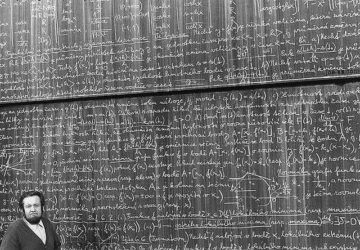
I routinely remind my students that human minds have always been as complicated as they are now, from when we dropped out of the trees to when we step upon the escalator. When we are reading in the history of ideas there is always the temptation to turn intellectual landscapes into cartoons where options are limited, painted in bright primary colors, and uncomplicated, like a toddler maze in Legoland. What’s going on, I suppose, is some hidden supposition that people who lived in earlier times must have been like us when we were children; or to put it more accurately, we suppose that people of earlier times must have been like we now conceive ourselves to have been when we were children. For we are wrong on both counts. Our lives when we were children were more complicated than we now remember, and every life that has ever been lived has been more complicated than we are now likely to suppose, because that’s just what it is to be human: we are complication engines.
But it is also true that we know more than we have in the past. (That of course doesn’t make the minds of the past any less complicated: minds are not complicated by what they know, but by what they think they know). This is clearly true at the species level: humans know more now than they ever have before – Moon shots, penicillin, Higgs boson, and all that. But I am guessing that it is also true that we as individuals, on average, have more knowledge in our heads than our historical counterparts, on average. I have to guess this because how on earth could anyone know for sure that this is so? What would they measure? Whom would they measure? When would they measure it?
For what it’s worth, IQ scores have been going up since their inception (see the Flynn effect; though note that IQ scores seem to be hitting a plateau in recent times). But it stands to reason that if more people are getting more education, and if what people are being taught to some degree tracks what we, as a species, have come to know about the world, then more individuals should be gaining more knowledge than previously. Of course, this general truth – if it is a truth – falls apart as soon as we start complicating the discussion by asking what we are measuring as “knowledge”. So long as we stay at the unfocused level of “you know, truths about the world”, we can maybe get away with the general claim that individuals know more now than they have in the past.
But our advance in knowledge has come with an advance in the complexity of our problems. Read more »
Is Education Worthless?
by Fabio Tollon
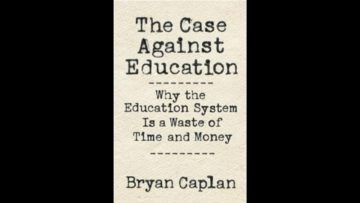
“How do you get a philosophy major away from your front door? You pay them for the pizza.”
As a doctoral candidate in philosophy people often ask me what I am going to “do” with my degree. That is, how will I get a job and be a good, productive little bourgeoisie worker. How will I contribute to society, and how will my degree (which of course was spent thinking about the meaning of “meaning”, whether reality is real, and how rigid designation works) benefit anybody. I have heard many variations on the theme of the apparent uselessness of philosophy. Now, I think philosophy has a great many uses, both in itself and pragmatically. Of concern here, however, is whether not just philosophy, but education in general might be (mostly) useless.
If you are like me, then you think education matters. Education is important, should be funded and encouraged, and it generally improves the well-being of individuals, communities, and countries. It is with this preconception that I went head-first into Bryan Caplan’s well written (and often wonderfully irreverent) The Case Against Education, where he argues that we waste trillions in taxpayer revenue when we throw it at our mostly inefficient education system. Caplan does not take issue with education as such, but rather the very specific form that education has taken in the 21st century. Who hasn’t sat bored in a class and wondered whether circle geometry would have any bearing on one’s employability?
As the title suggests, this is not a book that is kind in its assessment of the current state of education. While standard theory in labour economics argues that education has large positive effects on human capital, Caplan claims that its effect is meagre. In contrast to “human capital purists”, Caplan argues that the function of education is to signal three things: intelligence, conscientiousness, and conformity. Education does not develop students’ skills to a great degree, but rather seeks to magnify their ability to signal the aforementioned traits to potential employers effectively. Read more »
Poem
She Drives as I Scribble on London
I wear my French bodice and you don’t even notice
I dread turning into a submissive housewife
Will you still hug me after we are married?
I understand the off-side rule in football better than many men I know
When I’m premenstrual, I want to smash glass
I can’t bear the thought of dead meat in my stomach
London is a city of roundabouts
This is not New York
We give way to other drivers
The best view is from the Waterloo bridge
I don’t want a dowry—that’s so South Asian
I never ever indulge in malicious gossip
We have our demons
When I was a child in Mombasa, I jumped rope with the cook’s daughter
By Rafiq Kathwari — his new collection of poems, “My Mother’s Scribe” (Yoda Press 2020), is available here. Please do read. Thank you.
Built By Books
by Mary Hrovat
 Escape. When I was a child, I read at every opportunity. If I could, I’d read on the playground; at one point, I was allowed to spend recess in the library and read there. Overall, teachers seemed unenthusiastic about the idea of a kid reading during recess. My mother, a great reader herself, used to tell me that reading was a treat, to be saved for the end of the day when all the work was done. When I was reading, I wasn’t playing with the other kids or helping out with the housework, as I should have been. But I was one of those people described by Penelope Lively, people who are “built by books, for whom books are an essential foodstuff, who could starve without.”
Escape. When I was a child, I read at every opportunity. If I could, I’d read on the playground; at one point, I was allowed to spend recess in the library and read there. Overall, teachers seemed unenthusiastic about the idea of a kid reading during recess. My mother, a great reader herself, used to tell me that reading was a treat, to be saved for the end of the day when all the work was done. When I was reading, I wasn’t playing with the other kids or helping out with the housework, as I should have been. But I was one of those people described by Penelope Lively, people who are “built by books, for whom books are an essential foodstuff, who could starve without.”
My family went to the public library every two weeks, and there were books in the house, so I was given at best a mixed message about reading. I seized the opportunities offered by the books around me while evading the imposed limits. I read in the closet in the evening after my sister was asleep, or in the living room late at night when everyone was asleep. When I could, I read while I ate. Perhaps I was fortunate to have a boundary to transgress, ever so gently and passively, so as to avoid being entirely subsumed in the role of good girl.
I was reading to learn, but also to escape. Reading for escape is sometimes seen as an inappropriate use of time or a failure to accept reality. Look what happened to Emma Bovary and Catherine Morland (characters created by Gustave Flaubert and Jane Austen, respectively), who came to grief (in very different ways) by taking novels far too seriously. But escape from boredom, emotional distress, or anxiety is no bad thing. I tend to agree with W. Somerset Maugham, who said that reading provides “a refuge from almost all the miseries of life.” I was lucky this refuge was available to me. The power to escape into a book was a rare means of control over my circumstances, and I can’t imagine what life would have been like without it. Read more »
How Happy is Christmas?
by Peter Wells
 Christmas is traditionally a time for stories – happy ones, about peace, love and birth. In this essay I’m looking at three Christmas stories, exploring what they tell us about Christmas: the First World War Christmas Truce, The Gift of the Magi (O. Henry), and the Nativity story.
Christmas is traditionally a time for stories – happy ones, about peace, love and birth. In this essay I’m looking at three Christmas stories, exploring what they tell us about Christmas: the First World War Christmas Truce, The Gift of the Magi (O. Henry), and the Nativity story.
Peace: The Christmas Truce
The Christmas Truce of 1914 is, as the Imperial War Museum admits (link), one of the most mythologised events of the First World War. Here is one version, which is probably as near the truth as we are going to get:
Late on Christmas Eve 1914, men of the British Expeditionary Force heard German troops in the trenches opposite them singing carols and patriotic songs and saw lanterns and small fir trees along their trenches. Messages began to be shouted between the trenches. The following day, British and German soldiers met in no man’s land and exchanged gifts, took photographs and some played impromptu games of football. They also buried casualties and repaired trenches and dugouts. After Boxing Day, meetings in no man’s land dwindled out [Imperial War Museum website, my emphasis].
Love: The Gift of the Magi
O. Henry’s 1905 story, The Gift of the Magi, is a Christmas story about “two foolish children” – an impecunious American couple, aptly surnamed “Young.” We are introduced first to Della, who has only $1.87 to buy her husband, Jim, a Christmas present. She sells her exceptionally long and beautiful hair to a wigmaker, so that she can buy Jim a present that reflects her love for him. This earns her enough money to buy a gold chain for his beloved fob watch, and she is blissfully happy. Then he arrives, sees her with her shorn head, and the chain, and reacts in a terrifying manner:
His [Jim’s] eyes looked strangely at Della, and there was an expression in them that she could not understand. It filled her with fear. It was not anger, nor surprise, nor anything she had been ready for. He simply looked at her with that strange expression on his face [my emphasis].
This wild look comes about because Jim has bought, for Della’s Christmas present, a set of combs for her vanished hair. As a further irony, in order to buy the combs, he has sold the watch. So there are a number of emotions going through Jim’s mind, none of them happy, and none of them anti-Della, though they are very much anti-something. Read more »
Monday Photo
I am Going to Make it Through This Year/If it Kills me: Elegy for the Age of Stupid

by Mindy Clegg
Actor Ryan Reynolds recently directed two commercials for the dating website Match.com that summed up this year for many. A bored Satan in Hell gets an alert on his phone. His eyes widen and soon he’s meeting a young woman under a park bridge—who insists he calls her twenty-twenty. It’s a love at first sight, full of references to the year of hell.
A second commercial parodies the classic rom-com When Harry Met Sally.
A good bit of comedy to be sure. This year continues to dole out a serious amount of misery. Although it feels like this year is “happening to us,” in reality the things going on are a product of complex interactions between all of us on a global scale. If nothing else good emerged, this year magnified some of the core problems in our modern political, economic, and global social systems. In this month’s essay, I argue that 2020 has become a summation of failures not only of the current administration, but of the larger failures in our systems that we’ve left to rot for far too long now. The Trump administration did not find a pristine political and economic landscape on which to impose their will, but merely continued the already existing process of strangling the government in the bathtub, advocated by Grover Norquist. Read more »
In Search of Magic
by Callum Watts

Christmas gets me thinking about magic. Remembering the way I enjoyed Christmas as a child brings me back to a time when I believed in the power of supernatural phenomena. The most exciting piece of magic I performed was writing a message on a piece of paper, addressing it to Santa Claus in the North Pole, and setting it alight so that the smoke would be carried away on the winter breeze and read by him (I thought flying reindeer seemed pretty neat as well). The joy was of taking some of my innermost desires, embodying them materially and sending them into the world through a very practical activity, so that the universe could respond.
The sadness I felt at my loss of belief in Santa came from the realisation that I was living in a solely ‘material’ universe. As a scientifically curious child with no religious beliefs, the last bastion of magic had fallen. This death of magic was deeply disappointing, but this loss is not just at an individual one. In society as in biology, ontogeny recapitulates phylogeny. That is to say, I was merely following in the steps of a journey of disenchantment that many secular societies had already been on.
Max Webber was the first to comment on the way the triumph of science and bureaucracy was melting away traditional beliefs about the power of religion and the supernatural. He christened this process, which is distinctive of modernity, ‘disenchantment’. Science, by reducing the functioning of the universe to physical cause and effect gets rid of the need for explanations in terms of magic and gods and spirits. Likewise, modern bureaucratic systems reduce social life to rationalised processes which become ever more difficult to escape from, and dilute social activities of their traditional meaning in the name of efficiency and process. Read more »


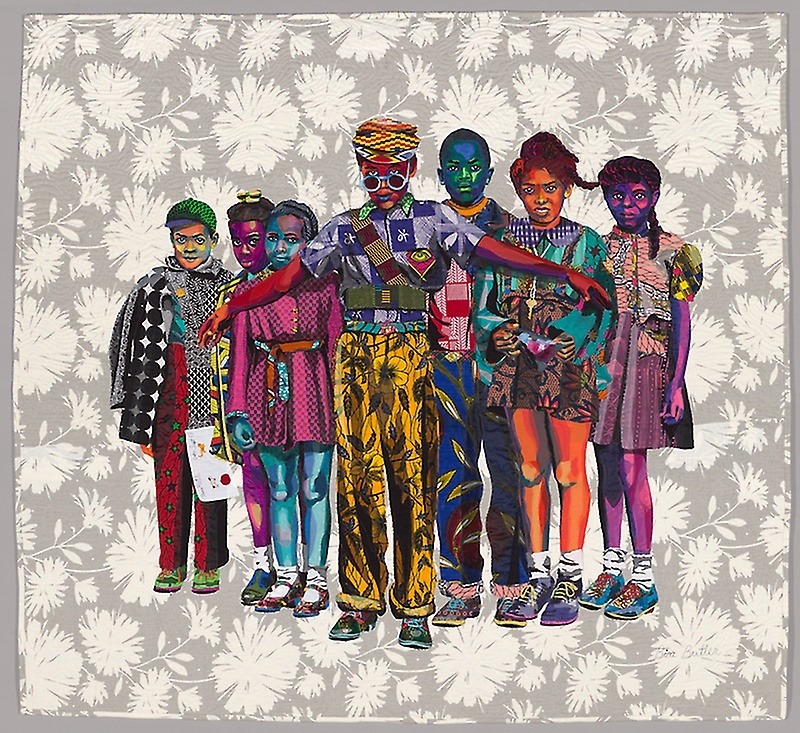 Bisa Butler. The Safety Patrol. 2018.
Bisa Butler. The Safety Patrol. 2018.